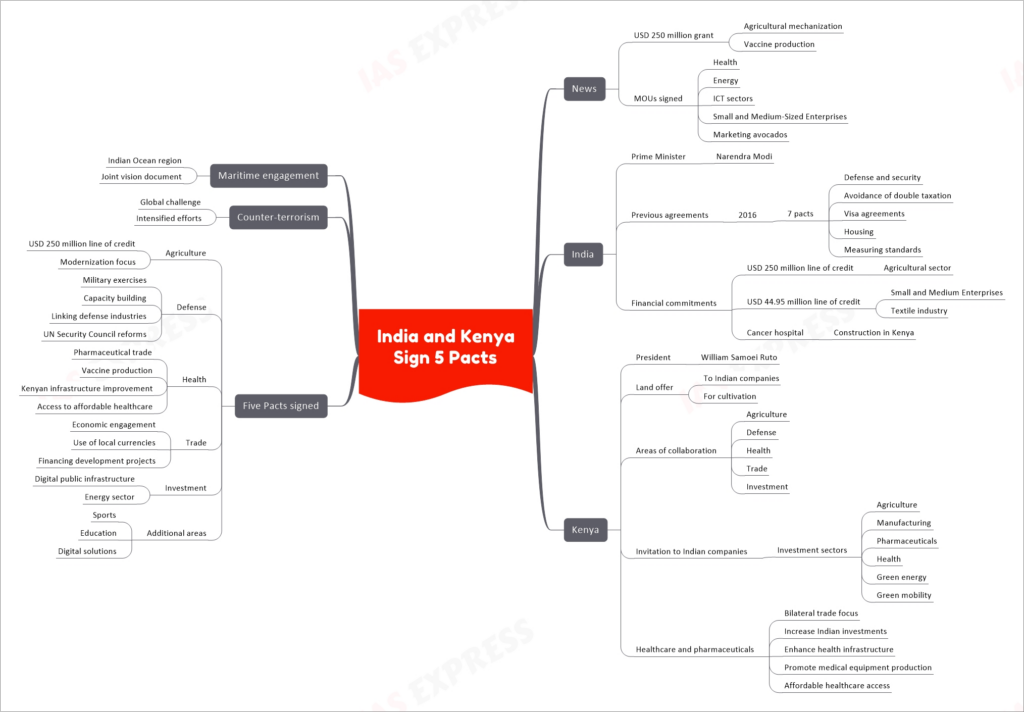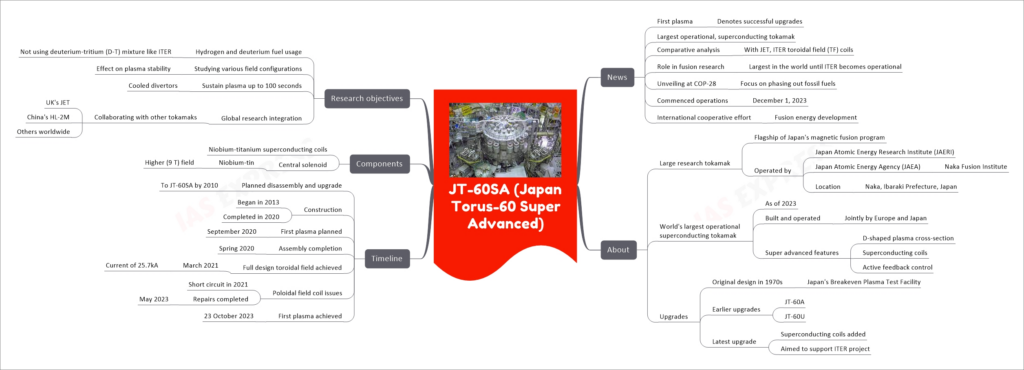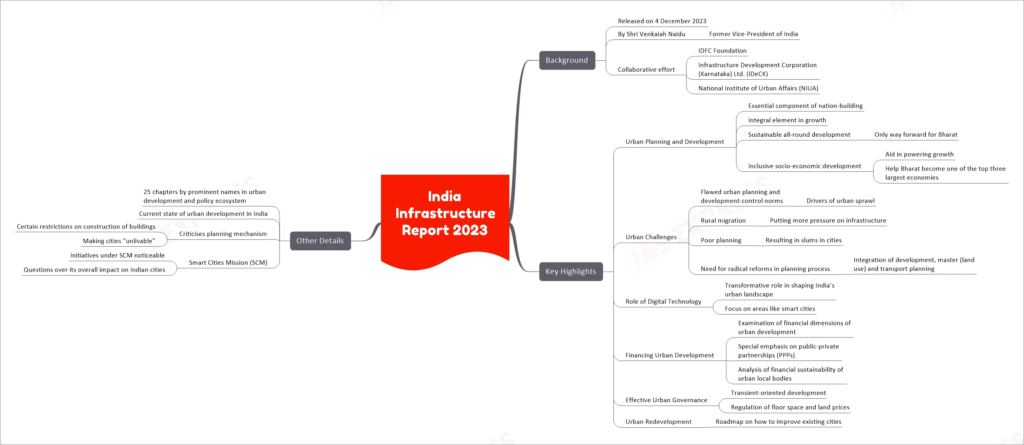[Newsbits] 6.12.2023 – Gram Manchitra app, Global Carbon Budget Report 2023, & more

The National Traders’ Welfare Board (NTWB), an initiative by the Department for Promotion of Industry and Internal Trade (DPIIT), marks a significant step in India’s efforts to support its vast trading community.
This topic of “National Traders’ Welfare Board (NTWB): Enhancing Trader Welfare in India” is important from the perspective of the UPSC IAS Examination, which falls under General Studies Portion.
Objectives and Composition of the NTWB
The NTWB was constituted with a clear set of objectives aimed at the welfare of traders and their employees. These include:
- Identifying policy measures to improve trader welfare.
- Simplifying Acts and Rules applicable to traders.
- Recommending ways to reduce the compliance burden on traders.
- Enhancing access to funds.
- Providing recommendations for social security benefits, such as insurance, pension, and healthcare.
- Addressing other problems faced by traders and their employees.
The composition of the NTWB is diverse, ensuring a comprehensive approach to the issues faced by traders. It includes:
- A Non-Official Chairperson.
- Up to 5 Non-Official members with expertise in retail trade.
- Up to 10 Non-Official members representing Trade Associations.
- One Non-Official member from each State and Union Territory.
- 9 Ex-officio representatives from various Ministries/Departments.
- The Joint Secretary, DPIIT, serving as the Convener of the Board.
Role and Scope
The NTWB plays a crucial role in addressing the diverse and complex issues pertinent to traders in India. The Board’s composition reflects its strength and scope, enabling it to effectively tackle the wide-ranging challenges of the retail sector.
Recent Developments and the ONDC Initiative
The inaugural meeting of the NTWB, held on December 5, 2023, at Vanijya Bhawan, New Delhi, under the chairmanship of Shri Sunil J. Singhi, focused on resolving issues related to traders. During this meeting, a presentation on the Open Network for Digital Commerce (ONDC) was made. The Board members were encouraged to promote this government initiative among the trader community, reflecting a push towards embracing digital advancements in commerce.
Conclusion
The establishment and the first meeting of the NTWB signify a proactive approach by the Indian government to address the challenges faced by traders and their employees. By focusing on policy measures, simplifications in regulations, and digital initiatives like ONDC, the NTWB is set to play a pivotal role in shaping the future of trading in India, making it more efficient, secure, and beneficial for all stakeholders involved.
The Global Carbon Budget report for 2023 has revealed alarming trends in fossil CO2 emissions, reaching unprecedented levels globally.
This topic of “Global Carbon Budget Report 2023” is important from the perspective of the UPSC IAS Examination, which falls under General Studies Portion.
Fossil CO2 Emissions Reach Record High in 2023
- Total Fossil CO2 Emissions: Projected to be 36.8 billion tonnes, up by 1.1% from 2022.
- Total CO2 Emissions: Including land-use changes, expected to reach 40.9 billion tonnes.
- Regional Trends:
- Europe and the USA see a decrease in emissions.
- Notable increases in India (8.2%) and China (4.0%).
Emissions Sources and Atmospheric CO2 Levels
- Fossil Fuels:
- Coal emissions increased by 1.1%.
- Oil emissions rose by 1.5%.
- Gas emissions saw a 0.5% increase.
- Land-Use Change: Includes deforestation and efforts in reforestation and afforestation.
- Atmospheric CO2 Levels: Projected to average 419.3 parts per million, a 51% rise from pre-industrial levels.
- CO2 Absorption: About half absorbed by land and ocean “sinks.”
Global CO2 Emissions from Fires and Carbon Dioxide Removal Technologies
- CO2 Emissions from Fires: Larger in 2023 due to extreme wildfire seasons, notably in Canada.
- Carbon Dioxide Removal Technologies: Current levels are at 0.01 million tonnes CO2, significantly lower than fossil CO2 emissions.
Paris Agreement Targets and the Urgency to Act
- 1.5°C Warming Limit: Likely to be exceeded within the next seven years at the current emission rate.
- 2°C Warming Limit: Requires rapid cuts in fossil fuel emissions to remain achievable.
Contributors to the Study
- Institutions Involved: University of Exeter, University of East Anglia, CICERO Center for International Climate Research, Ludwig-Maximilian-University Munich, among 90 others.
- Key Scientists: Professor Pierre Friedlingstein and Professor Corinne Le Quéré.
Indian Context in the Global Carbon Budget
- United Nations Report on India:
- Commends India for maintaining comparatively low carbon emissions.
- India’s global contribution to warming stands at 5%, with 18% of the world population.
- India’s Climate Pledges:
- Net Zero emissions target by 2070.
- Under the Panchamrit Action Plan:
- Achieving 500 GW of non-fossil fuel energy capacity by 2030.
- Fulfilling at least half of its energy requirements through renewable energy by 2030.
Conclusion
The 2023 Global Carbon Budget report underscores the critical state of global carbon emissions, emphasizing the urgent need for concerted global action to mitigate climate change. India’s role in this scenario is noteworthy, with its efforts to maintain lower emissions relative to its large population and its ambitious climate targets. The path forward is clear: rapid and decisive action is needed to limit global warming and avert the worst impacts of climate change.
In a groundbreaking move, the Ministry of Panchayati Raj in India launched the Gram Manchitra app in December 2023. This innovative Geographic Information System (GIS) application is set to transform spatial planning at the Gram Panchayat level. The introduction of this technology marks a significant step towards empowering local governance with advanced geo-spatial capabilities.
This topic of “Gram Manchitra app” is important from the perspective of the UPSC IAS Examination, which falls under General Studies Portion.
Key Aspects of Gram Manchitra App
Launch and Purpose
- Launched by: Ministry of Panchayati Raj
- Launch Date: December 2023
- Primary Objective: Enhancing spatial planning at the Gram Panchayat level
- Goal: Empower Gram Panchayats and revolutionize local spatial planning
Utilization of Geographic Information System (GIS) Technology
- Technology Used: Geo-spatial technology
- Unified Platform: Facilitates comprehensive planning and visualization of developmental initiatives
- Decision Support System: Assists in the creation and execution of the Gram Panchayat Development Plan (GPDP)
Features of the Gram Manchitra App
- Spatial Maps Creation: Allows detailed mapping of Panchayats
- Landmark Identification: Helps in identifying key geographic landmarks for development projects
- Information Repository: Acts as a database for demographic and infrastructure details
- Project Visualizations: Provides clear visualizations to understand complex development projects
- Real-time Monitoring: Enables monitoring of ongoing projects
- Resource Allocation: Supports efficient allocation of resources based on data-driven insights
- Project Prioritization: Aids in prioritizing projects according to area-specific needs
Integration with mActionSoft
- Solution Type: Mobile-based solution for capturing geo-tagged photos
- GPS Utilization: Uses GPS coordinates for accurate geo-tagging
- Operational Stages:
- Prior to the commencement of development work
- During the work process
- Upon project completion
- Information Repository Creation: Encompasses various sectors like natural resource management, sanitation, water harvesting, and agriculture
- Integration with Gram Manchitra: Enhances visualization and ensures transparency in the usage of finance commission funds
Impact and Benefits of the Gram Manchitra App
- Comprehensive Planning Empowerment: Equips Gram Panchayats for all-encompassing planning
- Decision Support Mechanism: Provides a robust system for site identification, asset tracking, cost estimation, and impact assessment
- Streamlining Developmental Initiatives: Simplifies and optimizes developmental processes
- Promoting Transparency and Efficiency: Fosters openness and effectiveness in local governance
The Gram Manchitra app stands as a pivotal advancement in the field of local governance in India. By integrating advanced GIS technology, it not only streamlines developmental initiatives but also enhances transparency and efficiency within the Gram Panchayats. This tool is a testament to the potential of technology in transforming the landscape of rural planning and governance.
Key points from the mind map:
- India and Kenya Sign 5 Pacts: Signed on December 5, 2023, these pacts are a continuation of the countries’ ongoing collaboration.
- India’s Role: Led by Prime Minister Narendra Modi, India extended significant financial support for Kenya’s agricultural sector and SMEs, and committed to building a cancer hospital in Kenya.
- Kenya’s Contributions: Under President William Samoei Ruto, Kenya offered land for cultivation to Indian companies and invited further investments in various sectors, emphasizing healthcare and pharmaceuticals.
- Areas of Collaboration: The pacts cover diverse fields including agriculture, defense, health, trade, and investment. Additional focus areas include sports, education, and digital solutions.
- Financial Commitments: India announced a USD 250 million line of credit for Kenya’s agriculture and a USD 44.95 million line of credit for SMEs and textiles.
- Defense and Security: Both countries are working on military exercises, capacity building, linking defense industries, and pushing for reforms in the United Nations Security Council.
- Healthcare and Pharmaceuticals: Both nations are focusing on enhancing health infrastructure in Kenya and promoting Indian investments in medical equipment and pharmaceuticals.
- Trade and Investment: Economic engagement includes using local currencies for trade and financing development projects. India commits to sharing its digital public infrastructure achievements with Kenya.
- Counter-Terrorism Cooperation: Both nations recognize terrorism as a significant global challenge and are committed to intensifying their counter-terrorism efforts.
- Maritime Engagement: A joint vision document was unveiled to enhance maritime engagement in the Indian Ocean region.
This topic of “Indian Post Office Bill, 2023” is important from the perspective of the UPSC IAS Examination, which falls under General Studies Portion.
Introduction
In a significant legislative move, the Rajya Sabha recently passed the Indian Post Office Bill, 2023. This bill aims to replace the 125-year-old Indian Post Office Act, signifying a major overhaul in the country’s postal service regulations. Amidst concerns raised by several opposition parties regarding privacy infringement, this bill introduces notable changes and raises important questions about the future of postal services in India.
Purpose and Background
- Replacement of the Indian Post Office Act, 1898:
- The Act has been the cornerstone of regulating India Post, a central government department.
- Aim of the New Bill:
- It seeks to modernize and simplify the legislative framework, transforming India Post into a more citizen-centric network.
Key Provisions
- Director General of Postal Services:
- Appointed to head India Post with powers to regulate tariffs and supply of postage stamps.
- Government’s Privileges and Powers:
- The government relinquishes its exclusive right to convey letters, with services now prescribed under Rules.
- Empowered to intercept postal articles for reasons like national security, public order, and emergency.
- Liability and Accountability:
- India Post is exempt from liability except as prescribed through Rules, raising accountability questions.
- Absence of specified offences and penalties, leading to concerns about consumer rights and privacy.
- Regulation of Services:
- Distinct from private courier services which lack specific legislation.
- Differences in consumer protection frameworks between India Post and private couriers.
Concerns and Criticism
- Lack of Procedural Safeguards:
- The bill’s ambiguity in interception safeguards could violate privacy and free speech rights.
- Emergency Grounds:
- The term ’emergency’ as a ground for interception may exceed constitutional restrictions.
- Removal of Offences and Penalties:
- Elimination of penalties for postal service violations raises serious privacy and accountability issues.
- Exemption from Liability:
- Potential conflict of interest as the central government administers India Post while prescribing liabilities.
Comparison with Other Services
- Railway Claims Tribunal Act, 1987:
- A contrasting approach to handling grievances compared to the railways, also a central government service.
Conclusion
The Indian Post Office Bill, 2023 marks a pivotal shift in India’s postal service landscape. While it aims to modernize and streamline services, the bill has sparked debates over privacy, accountability, and the role of government in postal services. As the bill moves forward, it’s imperative to address these concerns, ensuring that the evolution of India Post aligns with the fundamental rights and expectations of the Indian populace. The balance between modernization and safeguarding citizen rights will be crucial in determining the success of this legislative change.
The JT-60SA (Japan Torus-60 Super Advanced), a monumental advancement in fusion reactor technology, has recently marked a significant milestone. As of December 2023, it stands as the world’s largest operational superconducting tokamak, a pivotal step forward in the quest for practical fusion energy. This achievement not only underscores the decades-long journey of the JT-60SA but also highlights the collaborative efforts in fusion research.
This topic of “JT-60SA: The Pinnacle of Fusion Reactor Technology” is important from the perspective of the UPSC IAS Examination, which falls under General Studies Portion.
Background and Evolution of JT-60SA
JT-60SA, originally conceptualized in the 1970s as Japan’s Breakeven Plasma Test Facility, has undergone several transformations:
- Origins and Upgrades:
- Initially designed as part of Japan’s magnetic fusion program.
- Earlier models included JT-60A and JT-60U.
- The SA in its name stands for Super Advanced, embodying its cutting-edge features.
- Location and Operation:
- It is operated by the Japan Atomic Energy Agency’s Naka Fusion Institute.
- Located in Naka, Ibaraki Prefecture, Japan.
Technical Specifications and Upgrades
The JT-60SA is not just a testament to technological advancement but also a beacon of international collaboration:
- Superconducting Tokamak:
- Holds the title of the world’s largest operational superconducting tokamak as of 2023.
- A joint venture between Europe and Japan.
- Unique Features:
- Incorporates a D-shaped plasma cross-section.
- Employs superconducting coils and active feedback control for enhanced performance.
- Construction and Upgrade Timeline:
- Planned upgrade from JT-60 to JT-60SA initiated by 2010.
- Construction began in 2013, with assembly completed in 2020.
- Achieved its full design toroidal field in March 2021.
Recent Developments and Achievements
December 2023 marked a pivotal moment for JT-60SA, showcasing its role in the future of fusion energy:
- First Plasma Achievement:
- Successfully generated first plasma on 23 October 2023.
- Signifies the successful completion of its upgrades.
- Comparative Analysis:
- Its toroidal field coils have been compared with those of JET and ITER.
- Global Significance:
- Remains the largest until ITER becomes operational.
- Unveiled at COP-28, emphasizing its role in the transition away from fossil fuels.
- Commencement of Operations:
- Began operations on December 1, 2023.
- Represents a significant step in international cooperation for fusion energy development.
Research Objectives and Global Integration
JT-60SA’s research aims are crucial for the overall progress in fusion energy:
- Fuel and Plasma Studies:
- Utilizes hydrogen and deuterium, differing from ITER’s deuterium-tritium mixture.
- Focuses on studying field configurations and their effects on plasma stability.
- Collaborative Research:
- Works in conjunction with other global tokamaks, such as the UK’s JET and China’s HL-2M.
- Provides invaluable insights and experience for future ITER operations.
In conclusion, JT-60SA’s recent achievements signify a monumental leap in fusion reactor technology, showcasing the culmination of decades of research and international collaboration. Its commencement of operations and its status as the largest operational superconducting tokamak mark a critical step towards realizing practical fusion energy, with implications far beyond its Japanese and European origins.
On December 4, 2023, the former Vice-President of India, Shri Venkaiah Naidu, unveiled the much-anticipated India Infrastructure Report 2023. This report is a collaborative effort by the IDFC Foundation, Infrastructure Development Corporation (Karnataka) Ltd. (iDeCK), and the National Institute of Urban Affairs (NIUA). The report provides an in-depth analysis of the current state of urban development in India and offers a roadmap for the future.
This topic of “India Infrastructure Report 2023” is important from the perspective of the UPSC IAS Examination, which falls under General Studies Portion.
Key Highlights
The report covers a wide range of topics related to urban development. Here are some of the key highlights:
Urban Planning and Development
- The report emphasizes that urban planning and development is an essential component of nation-building and an integral element in growth.
- It advocates for sustainable all-round development as the only way forward for Bharat.
- It also highlights the role of inclusive socio-economic development in powering growth and helping Bharat become one of the top three largest economies.
Urban Challenges
- The report identifies flawed urban planning and development-control norms as the drivers of urban sprawl.
- It points out that rural migration is putting more pressure on infrastructure.
- It criticizes poor planning, which is resulting in slums in cities.
- It calls for radical reforms in the planning process, including the integration of development, master (land use), and transport planning.
Role of Digital Technology
- The report acknowledges the transformative role of digital technology in shaping India’s urban landscape.
- It encourages a focus on areas like smart cities.
Financing Urban Development
- The report examines the financial dimensions of urban development, with special emphasis on public-private partnerships (PPPs).
- It also provides an analysis of the financial sustainability of urban local bodies.
Effective Urban Governance
- The report discusses transient-oriented development and the regulation of floor space and land prices.
Urban Redevelopment
- The report provides a roadmap on how to improve existing cities.
Other Details
The India Infrastructure Report 2023 consists of 25 chapters written by prominent names in the urban development and policy ecosystem. It provides a critical analysis of the current state of urban development in India. It criticizes the planning mechanism, particularly certain restrictions on the construction of buildings, which it argues are making cities “unlivable”.
The report also discusses the Smart Cities Mission (SCM), acknowledging the noticeable initiatives under SCM but questioning its overall impact on Indian cities.
Conclusion
The India Infrastructure Report 2023 is a comprehensive document that provides a critical analysis of the current state of urban development in India and offers a roadmap for the future. It highlights the challenges and opportunities in urban planning and development, and calls for radical reforms to ensure sustainable and inclusive growth. The report is a must-read for policymakers, urban planners, and anyone interested in the future of urban development in India.







